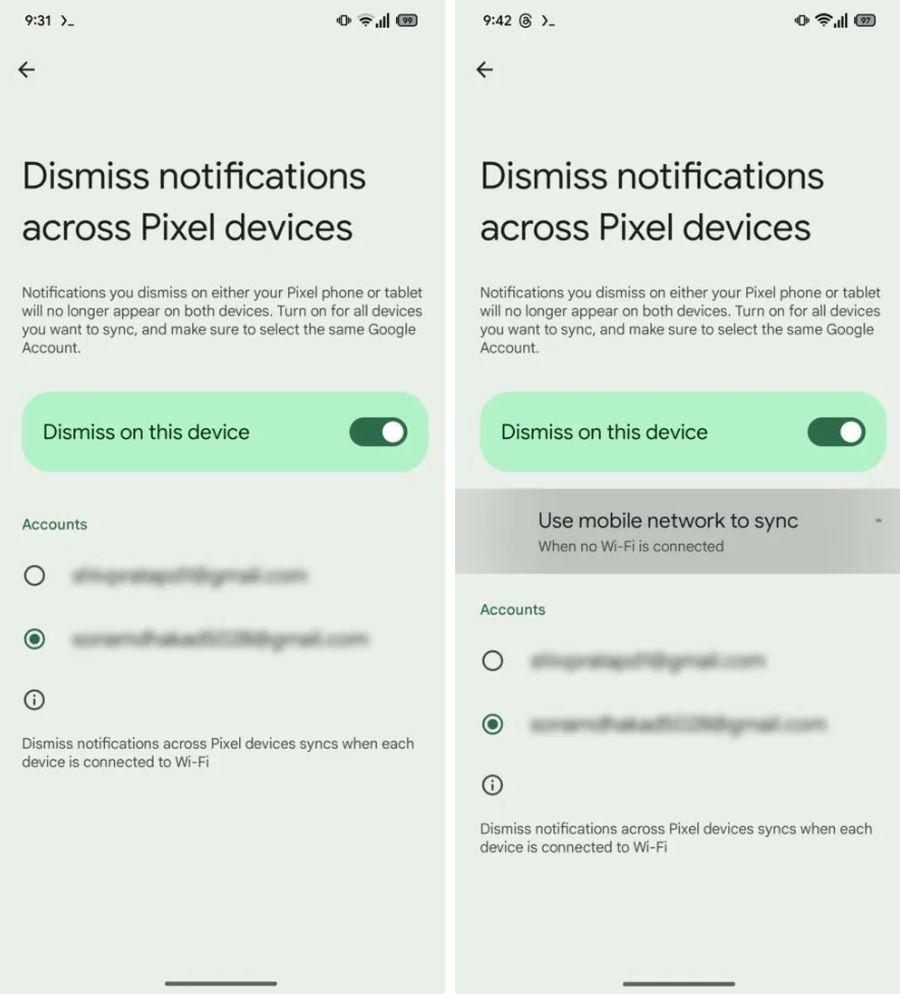Google is testing a feature that could allow Pixel users to sync notifications over cellular data, according to Android Authority‘s APK teardown of code strings in the Device Connectivity Service app. This follows the rollout of notification syncing in Android 15, which currently operates only over Wi-Fi.
This Pixel update is so important for 3 reasons
Google tests mobile data sync for Pixel notifications
The feature, known as “Dismiss notifications across Pixel devices,” enables users to dismiss a notification on one Pixel device, which then automatically dismisses it on all other Pixel devices logged into the same account. However, this feature has been limited to Wi-Fi connections, preventing sync when users are away from Wi-Fi networks.
Code found in version 1.0.687093228_arm64-v8a_release_phone of the Device Connectivity Service app indicates a new toggle that would allow notification syncing over mobile networks when no Wi-Fi is connected. This toggle, although non-visible to users and still in development, suggests Google is considering changes to improve user experience.

Currently, the fine print emphasizes that “Dismiss notifications across Pixel devices syncs when each device is connected to Wi-Fi,” likely to conserve battery life and limit cellular data usage. The introduction of mobile network syncing would offer flexibility for users willing to trade off some battery performance for the convenience of connectivity.
We might know what Google Pixel 10 looks like
While the feature remains exclusive to Pixel devices, Google is developing more general Cross Device Services that link other Android brands, such as the recent introduction of these services to Nothing phones. For now, Pixel users will remain reliant on Wi-Fi for notification synchronization until this potential new feature is released.
This is not a shiny feature for Pixel users but it’s big because it finally adds the level of flexibility that many have been waiting for. Until now, the ability to sync notifications across multiple devices was confined to Wi-Fi, leaving users in the lurch when they were on the go.
Featured image credit: Samuel Angor/Unsplash






